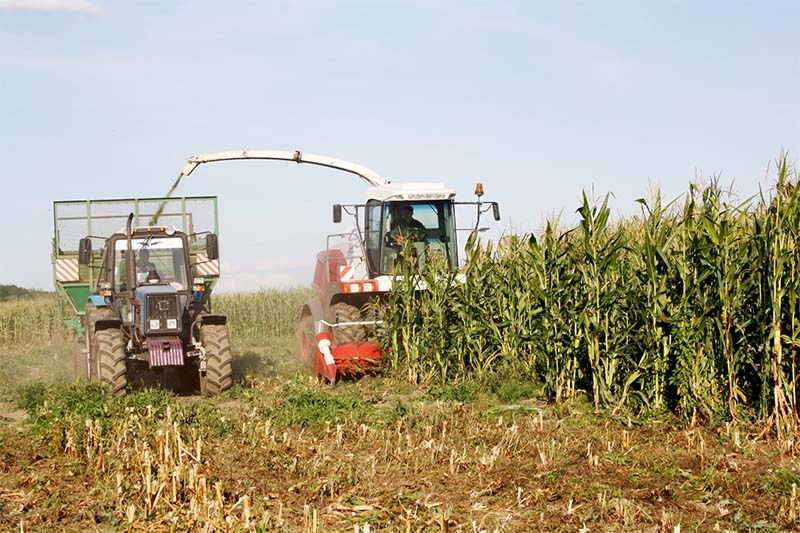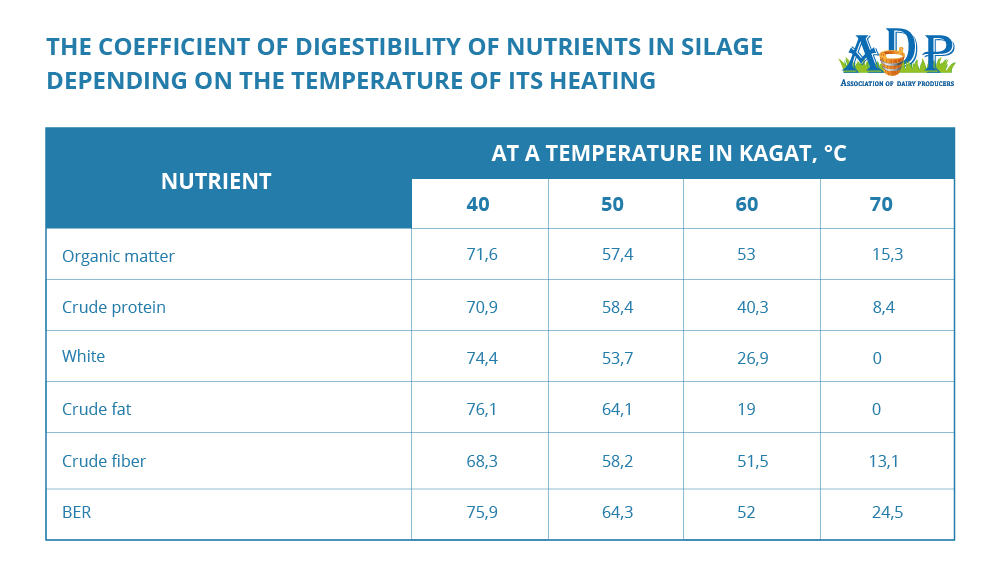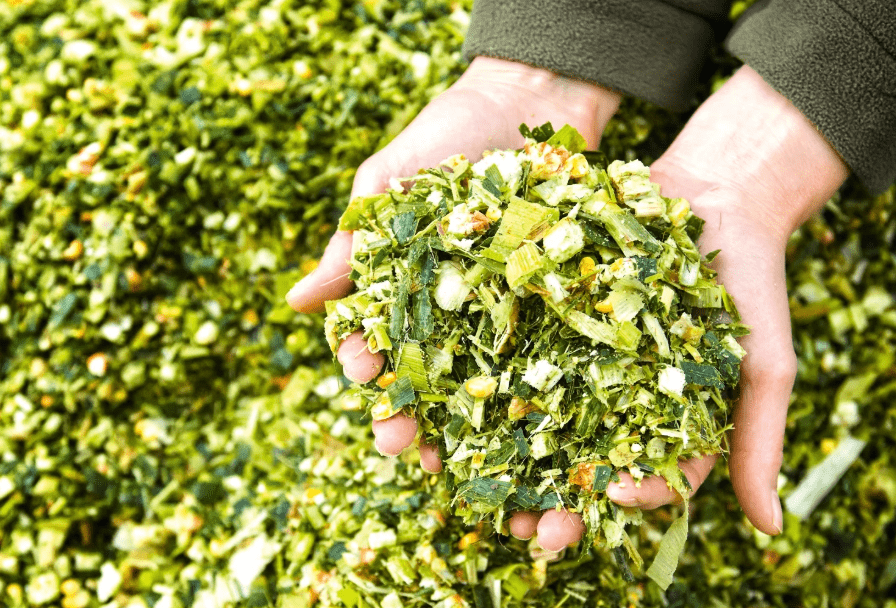Maize is a common raw material for silage, the main advantage is the high concentration of exchangeable energy, which makes it possible to compare his with barley grain. Maize silage allows reducing the share of concentrated feed in the diet, without reducing its nutritional value for highly productive animals. The most nutritious silage is obtained when harvesting corn at the end of milk-wax and wax ripeness of grain. when the humidity of the green mass is 65-70% with sufficient sugars to form lactic acid. To obtain silage of high productive action with the optimal fiber content, it is necessary to mow maize plants at the height of the 2-3rd internode.
The success of silage is determined by three main conditions: raw materials, silage facilities, technology.

The harvested maize before milky-wax ripeness has a high sugar and moisture content of up to 85 %, which leads to sour excessively silage. Besides, during the harvest of maize in the early stages of ripeness, almost half of the dry matter crop and, accordingly, the feed energy are not taken from the field.
Tips for quality silaging:
- Harvesting maize for silage should be carried out at the optimum ripening time (the moisture content of the green mass should be 60% - 70%, the optimum - 65%) with the moisture content of the green mass less than 60% - may arise a problem with its compaction. We will not be able to ensure the quality of compaction, and, accordingly, maintain the quality of the green mass in the silage.
- Grinding control. Maize grinding to a particle size of 10-20 mm will ensure the quality of the compaction and good silage consumption in the future.
- Try to minimize soil ingress into the green mass for silage. The soil ingress into feedstocks silage to contamination its clostridia, and as a result, the formation of butyric acid will negatively affect the quality of silage and its consumption.
- The correct choice of silage facility (tower or trench type). After filling, the trench is covered by film and straw (this prevents mold in the upper layer of the feed).
- Silage compaction. The more densely we compact the green mass of corn - the less free oxygen will remain there for the development of bacteria - the more nutrients we will save in the future silage. The weight of the tamping tractor is very important.
What necessary for high-quality compaction of the silage :
- the content of dry matter should be 30-35%;
- the length of plant particles after cutting should be 10-20 mm;
- the structure of each grain must be broken, the grain crushed;
- the pressure on the contact area must be at least 2 bar;
- the speed of filling the silаge structure should be a layer 0.8 m thick per hour.
- Try to minimize the penetration of atmospheric oxygen into the depth of the silage mass. Oxygen promotes the development of aerobic mold and yeast.This leads to the formation of substances harmful to livestock, significant loss of nutrients.
- To avoid of silage heating, as this leads to significant loss of quality.
- To obtain high-quality silage, chemical, biological, and mineral preservatives are introduced into the trenches during the harvesting period. With chemical preservation, the moisture content of the mass should be within 70%.
- Sealing the compacted green mass of corn. Every hour after the completion of ramming causes a loss of nutritional value in unsealed silos.The temperature of the uncovered silage can rise from 30-350C to 50-700, which will lead to a loss of the nutritional qualities of the silage.



